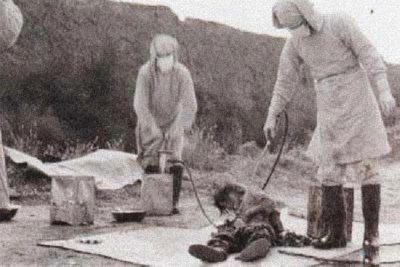Kintsukuroi: The Japanese Art of Fixing Pottery Reflects a Much Deeper Philosophy
Share

Kintsugi or Kintsukuroi repair work. (Haragayato / Wikimedia Commons)
Kintsukuroi, which means “golden repair” in Japanese, is the Japanese art of mending broken pottery or ceramics. It is achieved by mending the areas of breakage with lacquer dusted or mixed with powdered gold, silver or platinum. Kintsukuroi is also called kintsugi. Kintsugi is quite akin to the technique of maki-e. The underlying philosophy of kintsugi is that breakage and repair are treated as part of the natural history of an object, instead of something that must be disguised. Cracked or broken ceramic vessels are made immensely beautiful by highlighting the repairs with gold or silver.
The origin of Kintsukuroi
The art of lacquerware has been practised in Japan for hundreds of years. It is one of the best known cultural traditions in the country. Experts in the field are of the opinion that at some point in history, kintsugi must have been combined with maki-e as a replacement for other pottery and ceramic repair techniques. Although kintsugi is practised primarily by Japanese craftsmen, it was also practised widely by craftsmen in Korea, China, and Vietnam.
Kintsukuroi became an important part of Japanese culture after it became closely associated with the ceramic vessels used for the traditional Japanese tea ceremony of chanoyu.
There is a theory that kintsugi as an art form possibly originated when the 15th-century Japanese shogun Ashikaga Yoshimasa sent back a damaged Chinese tea-bowl for repairs. Which was then repaired with ugly metal staples and returned back to China. This prompted Japanese craftsmen to look for more beautiful and aesthetic means of repair.
The collectors were so drawn to the art that they deliberately smashed pottery to repair using kintsugi.

Kintsugi “golden joinery”. (Haragayato / Wikimedia Commons)
The philosophy behind the practice of Kintsukuroi
The philosophy of Kintsukuroi is derived from the Japanese philosophy of wabi-sabi. Wabi-sabi is a world-view that teaches an individual to embrace the flawed and imperfect. It confers with the Buddhist teaching of the ‘three marks of existence’. These are impermanence, suffering, and emptiness. The underlying philosophy is based around the acceptance of the transient and imperfect. The goal is to develop a more heightened idea of beauty where people look much further beyond the surface beauty of an object. In traditional Japanese aesthetics, kintsugi embraces the properties of roughness, asymmetry, simplicity, intimacy, and austerity.
Types of joinery in Kintsukuroi
There are a few major styles or joinery types in Kintsukuroi.
1. Crack Method
Gold dust, resin, and lacquer are used to attach broken pieces with minimal overlap from missing places. In the crack method of kintsugi, the gold lacquer finish highlights the beauty of the piece of ceramic that has been repaired.

A tea bowl repaired with gold lacquer. (Daderot / Wikimedia Commons)
2. Piece Method
The piecing method is used when an entire piece of ceramic is missing and is not available. The gap in the ceramic piece is filled in with a gold-lacquer compound.
3. Joint Call
In this method, a patchwork effect is created by using a similarly shaped but non-matching piece of ceramic from another vessel to replace the gap in another vessel. Using these techniques of Kintsukuroi, craftsmen repair broken ceramic vessels and make them aesthetically pleasing.
Mio Heki – A notable Kintsukuroi artist
Mio Heki, a Japanese artist, is one of the most renowned practitioners of Kintsukuroi today. Heki uses urushi, resin-like sap of the urushi tree, to repair objects. And when exposed to moisture and air, this resin becomes hard and plastic-like. After obtaining a degree in art, Heki was completely enamoured by the art of urushi. For many years, she started taking on temple repair jobs that varied in size and magnitude. On working so closely with lacquer, Mio Heki became a top expert in the field of lacquerware and kintsugi.
Hiko is also known for her charming practice of using only natural products while creating her beautiful masterpieces. Her craft elicits full use of the humid climate of Japan, the richness of the soil of Kyoto and her special handmade tools. All her different spatulas and cabinets are made out of different kinds of wood. As kintsukuroi is very delicate work, each wooden spatula serves a different purpose. As Heki is a master of the art, her deft fingers can quickly repair a broken piece of ceramic using the beautiful method of kintsugi.
Enjoyed this article? Also, check out “Osamu Tezuka: The Walt Disney of Japan“.
Fact Analysis:
STSTW Media strives to deliver accurate information through careful research. However, things can go wrong. If you find the above article inaccurate or biased, please let us know at [email protected]













